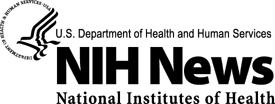Chimp Genome Assembled by Sequencing Centers
Draft Sequence Aligned With Human Genome
Bethesda, Maryland — The National Human Genome Research Institute (NHGRI), one of the National Institutes of Health (NIH), today announced the first draft version of the genome sequence of the chimpanzee and its alignment with the human genome. All of the data have been deposited into free public databases and are now available for use by scientists around the world.
The sequence of the chimpanzee, Pan troglodytes, was assembled by NHGRI-funded teams led by Eric Lander, Ph.D., at The Eli & Edythe L. Broad Institute of the Massachusetts Institute of Technology and Harvard University, Cambridge, Mass.; and Richard K. Wilson, Ph.D., at the Genome Sequencing Center, Washington University School of Medicine, Saint Louis.
Researchers deposited the initial assembly, which is based on four-fold sequence coverage of the chimp genome, into the NIH-run, public database, GenBank, (www.ncbi.nih.gov/Genbank). In turn, Genbank will distribute the sequence data to the European Molecular Biology Laboratory’s Nucleotide Sequence Database, EMBL-Bank (www.ebi.ac.uk/embl/index.html), and the DNA Data Bank of Japan, DDBJ (www.ddbj.nig.ac.jp).
To facilitate biomedical studies comparing regions of the chimp genome with similar regions of the human genome, the researchers also have aligned the draft version of the chimp sequence with the human sequence. Those alignments can be scanned using the University of California, Santa Cruz’s Genome Browser, (http://genome.ucsc.edu/cgi-bin/hgGateway); the National Center for Biotechnology Information’s Map Viewer, (www.ncbi.nlm.nih.gov/mapview); and the European Bioinformatics Institute’s Ensembl system, (http://www.ensembl.org/).
An international team of scientists, led by researchers at the University of Washington in Seattle, Washington University and the Broad Institute (MIT/Harvard), is currently comparing the chimp and human genome sequences and plans to publish results of its analysis in the next several months.
Chimpanzees are the most closely related species to humans. Consequently, comparative analysis of the human and chimp genomes can reveal unique types of information impossible to obtain from comparing the human genome with the genomes of other animals. For more on the scientific rationale for sequencing the chimp genome, go to: www.genome.gov/Pages/Research/Sequencing/SeqProposals/ChimpGenome2.pdf. For more on comparative genomic analysis, go to: www.genome.gov/10005835.
NHGRI is one of 27 institutes and centers at NIH, an agency of the Department of Health and Human Services. The NHGRI Division of Extramural Research supports grants for research and for training and career development at sites nationwide. Information about NHGRI can be found at: www.genome.gov.
For additional information on the chimp genome assembly, contact:
National Human Genome Research Institute
Geoff Spencer
(301) 402-0911
The Eli & Edythe L. Broad Institute, MIT/Harvard
Lisa Marinelli
(617) 252-1967
Washington University School of Medicine
Joni Westerhouse
(314) 286-0120
University of Washington
Walter Neary
(206) 685-3841
| 
